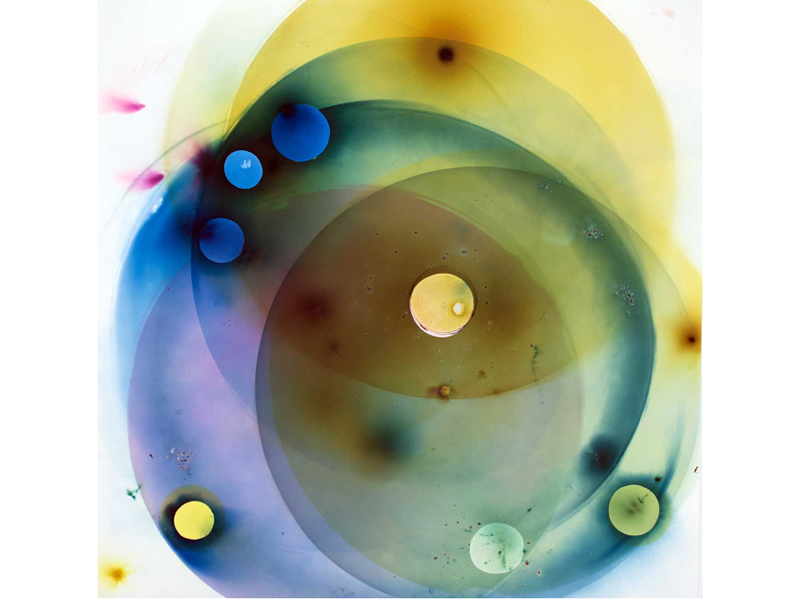
Inferencing: The intuiting of an invisible agency operating inside a stone.
Introduction: Perception and Agency
“The idea from the cognitive revolution that the mind is a system of universal, generative computational modules obliterates the way that debates on human nature have been framed for centuries.”[1]
Obviously, colored stones don’t possess what neuroscientists and neurophilosphers call “consciousness.” The British scientist Susan Greenfield succinctly defines it as the hard problem of, and current philosophical bafflement about, “how the water of brain functioning is converted into the wine of subjective experience.”[2] But, much like viewing pictures—as the Argentine fantasist, Adolfo Bioy Casares, writes—gazing into precious and semiprecious gems causes “new objects” to appear “in an endless succession.”[3] The magical realist is not referring just to the filmic stimulation of the eye. As with Carl Jung’s study of the “psychification” of rocks across world cultures, so-called “dead matter” everywhere seems imbued with life.[4]
Do gems have agency? Do they incite the brain to inference the existence of a hidden order inside the reflective mass, and are actual transformations of substance possible? That is, does their structure provoke mentalizing, and are they in some way “minded”—do they have a particular tendency or do they tend toward something? As the cognitive scientist Steven Pinker states, it’s the combinatorial modular organization of the brain (i.e., the brain as crystal) that generates an unlimited set of thoughts and behavior. What is it about crystal-chunking that encourages inferencing from the seen to the unseen, generating intense emotional and hypnotic states? Is there something special about such compressive modularity that synchronizes our inner situations with outer realities? If so, the allure of gems consists in more than reward-system response to consumer flash.
Holding Light/Capturing Color
“Original forms. Solid ideas.” [5]
In spring 2017, Sotheby’s announced the record sale of a polished pink rock for a staggering $71.2 million dollars. Not your average colored bauble, the gigantic 59.6 carat Pink Star Diamond now ranks as the world’s most coveted gem.[6] While the media focused on its lavish price and couture desirability, thoughtful scientists noted that it wasn’t only glamour that rendered such supremely hard stones important. For physicists of light, the diamond’s beauty lies in its amazing ability to slow things down—especially the fastest cosmic phenomenon of all. The miracle and the mystery is that light—as it drives into translucent crystal—doesn’t go straight through but instead swerves. The subsequent twists and turns of refraction mean that the greater the change in light’s speed during its progress downward, the greater the change of its direction.

This splintering process affects those myriad systems that “scale” or relate across very different quantitative and qualitative domains. For example, consider a solar cell where light goes in and current comes out, or, run in reverse, an LED (light-emitting diode) where light goes in and current goes out.[7] More dramatically, consider the phenomenal traffic problem caused by a hundred billion neurons and a hundred trillion synapses oscillating in our anatomically clumped yet networked brain. Picture a stored, then retrieved, signal—erupting into consciousness after multiple cortical crisscrosses, then exiting into the world bright with a uniquely subjective slant.
Diamonds are unusual in being superb not only at the shining/vibrating game[8] but at the scaling game—slowing light down to 41% of its full speed and so letting it bounce around the inside of the diamond before escaping out again, making the opposite facets sparkle. Take the Pink Star: light’s rainbow of colors split at the first swerve, then again on the way out, transforming white light into a roseate prism owing to its unusual underground formation. Apparently, enormous volcanic pressure produced a tiny shift in the crystalline structure and a unique tint. Think of this rosy hue as the visual signature of invisible organization, the way tapping on solid wood or rock reveals the acoustic interior by making “it sing its structure for all to hear.”[9]
Both rare diamonds and other gorgeous jewels allow us to touch and attend to what is otherwise intangible, imperceptible. These gems, too, are embodied behaviors in light and color: the vibrations and emissions of multiple different wavelengths. Possessing different densities and opacities, gems require that the Newtonian rainbow traverse them at different speeds—ranging from languid violet to quickened red, with the rest of the spectrum in between. Importantly, the human brain is habituated to such shiverings, dancings, or “doings”[10] of color—the slowing and swerving of light—until these energies are taken in by our eyes and lumped by the perceptual and motor systems into a unified experience.
This reality distortion (i.e., the bending of each ray at fixed angles) invites inferencing. Color, like sound or scent, is thus a creation of the brain—spontaneously seeking to impose structure on random waves and chaotic particles as they impinge on various bodies descending down the scale of creation. Psychiatrist and neuroscientist Giulio Tononi terms this conjunctive process “phi” (the fact, for example, that color can’t be perceived separately from shape) and identifies consciousness with the amount of integrated information in the brain.[11]
Gemstones are an exceptional instance of integration precisely because they are “lapidary”: a physically and perceptually concise mass. But they aren’t alone. Think of the conceptual/affective impact of Ernest Hemingway’s use of “monosyllabic” words or Paul Cezanne’s compositions of cabochon-like patches (irradiated color + space + time). Whether literary or pictorial, their work is marked by an eliminative structure of intelligible nuggets.[12] Writer and painter create intense, attention-arousing effects through gem-like brevity, with passage work moving from one pattern or shape into the next, resulting not only in verbal or painted eloquence, but in mystery. Intensification diminishes swerve, creating the magical synchronicity of sensing the whole (surface + depth) directly.

Scattering Stones/ Thinking in Bits and Pieces
“Life on earth … constitutes a remarkably thin glaze of interesting chemistry on an otherwise unremarkable, cooling ball of stone.”[13]
Mineralogists, geologists, paleontologists—digging for relics of fossilized time—marvel how lithic debris contains our universe’s cataclysmic origins. Astronomers—handling pitted or smoothed meteorites—visualize “the Great Dying” or End-Permian Extinction of 252 million years ago, when an asteroid crashed into Earth. What can such palimpsests of violent planetary history possibly mean to our tactilely bereft era—rife with screens and swipes and the outsourcing of physical contact?[14]
Scaled down, what can the vast tableaux of colored stones tell neuroscientists about our intuition of the numinous? Starting near the ontological bottom of the mineral kingdom, examples range from the most common granitic, quartz, silica,[15] gypsum, or glassy natural aggregates—i.e., mountainous, marine, or molten volcanic sands—to mutable landforms composed of crushed shells, granular dolomitic marble, and pulverized Australian or Indian garnet.[16] Although a humble substance in terms of organization and magnitude, shimmering sand is a primeval and globally dispersed type of light-shot volumetric color. Despite its tiny chromatic mass, it foretells the evolution of outsize gems and mirage-like illusory images (whose recent instantiations include holography and virtual reality). Lowly sand thus offers additional proof that beauty, not just Darwinian adaptation of the fittest, drives both natural and artifactual evolution. This argument-from-beauty was recently made by Yale ornithologist Richard O. Prum, citing, for one, the case of the satin bower bird adorning its nest solely with royal blue bits and pieces.[17]
Might such seemingly nonadaptive, creative traits not only form the cognitive ethology of astounding birds but extend to artificial entities such as artificial intelligence and artificial life? Or, as the Ovid of the Metamorphoses thought, descend to the shaping power of the very stones? The Austrian writer Christoph Ransmayr, in his evocation of the life and work of Ovid, traces the great poet’s exile from Imperial Rome to Scythia’s rock-strewn wilderness. While wandering above the Black Sea in what is now Romania, Ovid meditated on amber hunters, brook emeralds, opals, and the monolithic menhirs rising above the steep ravines. Tattered banners now flutter atop the cairns, inscribed with his revolutionary poetry, prophetic visions of our earth’s creation and evolution. Imagine scatterings of broken poetry situated in a fossilized panorama of postdiluvian ruins.
The Last World—Ransmayr’s novel about Ovid’s famous book of transformations—demonstrates how men and women might plausibly turn to stone or how, for animals, “petrifaction was the only way out of the chaos of life.”[18] In his retelling, Ransmayr recounts Ovid’s central origin myth of Deucalion flinging gravel, and his wife, Pyrrha, tossing pebbles behind them after the universal flood. From these fabled stones sprang a new race. “And human beings rose up out of the morass, a host from every pond—a brood of mineral-like hardness, with hearts of basalt, eyes of jade, without feelings, without a language of love, but likewise without any stirrings of hate, sympathy or grief, as implacable, as deaf and durable as the rocks of this coast.”[19]
The cognitive science of religion—inquiring into our social interactions with gods and their manifestations—has much to offer contemporary jewelers. While cognitive psychologists study the humanly anthropomorphic,[20] a “promiscuous anthropomorphism” revises the borders of the psychological. Ovid tapped into a rich tradition of animism attributing agency to trees, animals, rocks, and minerals. This transformative anthropomorphism assigns mental agency as well—the sympathy and antipathy of charmed stones, the attraction and repulsion of metals, the dazzling combinatorics of the multifaceted solitaire.
Today, the explosion of technological artifacts and the meltdown of media calls for a new defense of the generative power of art objects—not only as configurational but as cognitive.[21] Jewels as chromo-haptic materials place a premium on seeing-as-sensing. In a predominantly visual age, they awaken the imagination to touch, to reflective color volume, to the unknown that seems to hang in the air inside the reflective stone. Yet the neuroaesthetic medium of thought gems has still to make its cognitive debut. The urgent project at the moment is not fashioning more stuff for our addictive reward systems; it’s understanding how thoughtfulness can be produced.
[1] Steven Pinker, The Blank Slate: The Modern Denial of Human Nature (New York: Viking, 2002), 40–41.
[2] Susan Greenfield, Mind Change: How Digital Technologies Are Leaving Their Mark on Our Brain (New York: Random House, 2015), 72.
[3] Adolfo Bioy Casares, Invention of Morel (1940), translated by Ruth L.C. Simms, preface by Juan Luiz Borges (New York: New York Review Classics, 2003), 46.
[4] Carl G. Jung, Man and His Symbols (London: Aldus, 1964), 209.
[5] Joyce Cary, The Horse’s Mouth (New York: Harper, 1958), 186.
[6] Helen Czerski, “Light at Diamond Speed,” The Wall Street Journal (June 10–11, 2017), C4.
[7] See the compendium of accessible science lessons ranging from electromagnetics to supercapacitors: James Kakalios, The Physics of Everyday Things (New York: Crown, 2017).
[8] See my essay, “The Jewel Game: Gems, Fascination, and the Neuroscience of Visual Attention,” in Contemporary Jewelry in Perspective, edited by Damian Skinner (New York: Lark Books, 2015), 186–226. Also see my website: http://www.barbaramariastafford.com.
[9] Helen Czerski, “The Ring of a Ripe Watermelon,” The Wall Street Journal (July 1–2, 2017), C4.
[10] Victoria Finlay, Color: A Natural History of the Palette (New York: Ballantine, 2002), 6–7.
[11] Giulio Tononi, Phi: A Journey from Brain to Soul (New York: Pantheon, 2003).
[12] Adam Gopnik, “A New Man: Ernest Hemingway, Revised and Revisited,” The New Yorker (July 3, 2017), 64.
[13] Peter Brannen, The Ends of the World (London: Ecco, 2017).
[14] On our era’s lack of intimacy, see the novel by Courtney Maum, Touch (New York: Putnam, 2017).
[16] David Owen, “The End of Sand,” The New Yorker (May 29, 2017), 28–33.
[17] Richard O. Prum, The Evolution of Beauty (New York: Doubleday, 2017).
[18] Ransmayr, The Last World, (Nördlingen: F. Greno, 1988),140–141 and 116–117.
[19] Ibid, 126–127.
[20] See, for example, Ara Norenzayan, “Social Cognition, Theory of Mind, and Belief in Gods,” presented at the workshop Social Cognition, Autism, and Religiosity, given at the Center for Mind, Brain and Culture at Emory University, May 18, 2017. http://cmbc.emory.edu/. Also see his new book, Big Gods.
[21] See my book, Echo Objects: The Cognitive Work of Images (Chicago and London: The University of Chicago Press, 2007).





